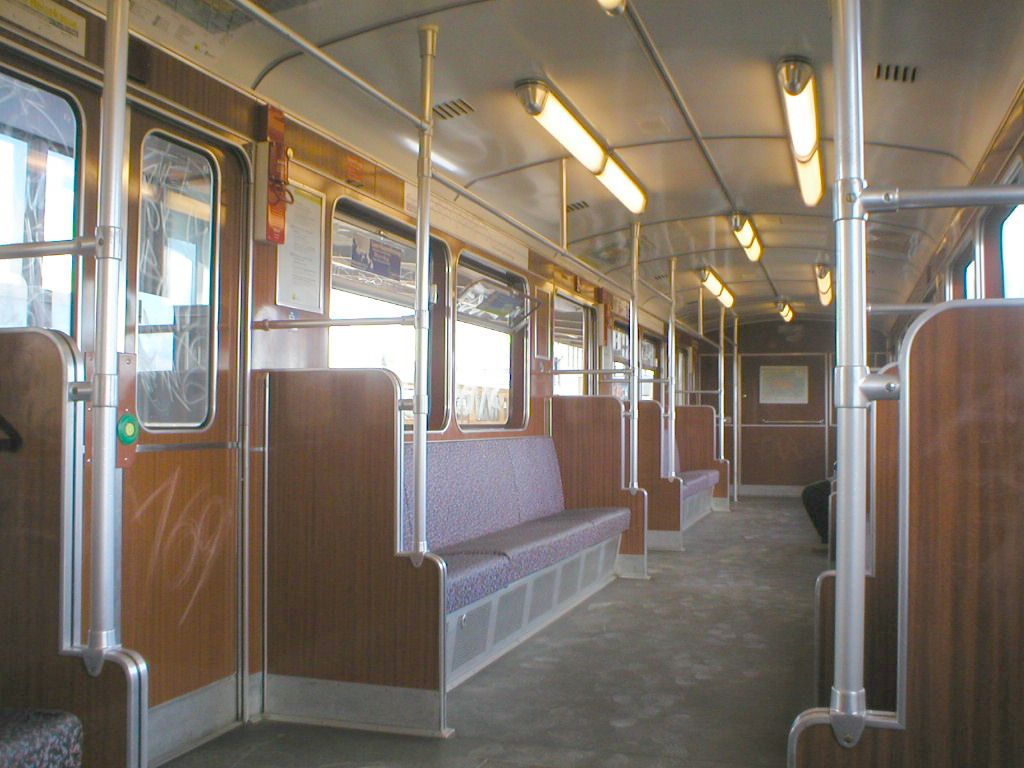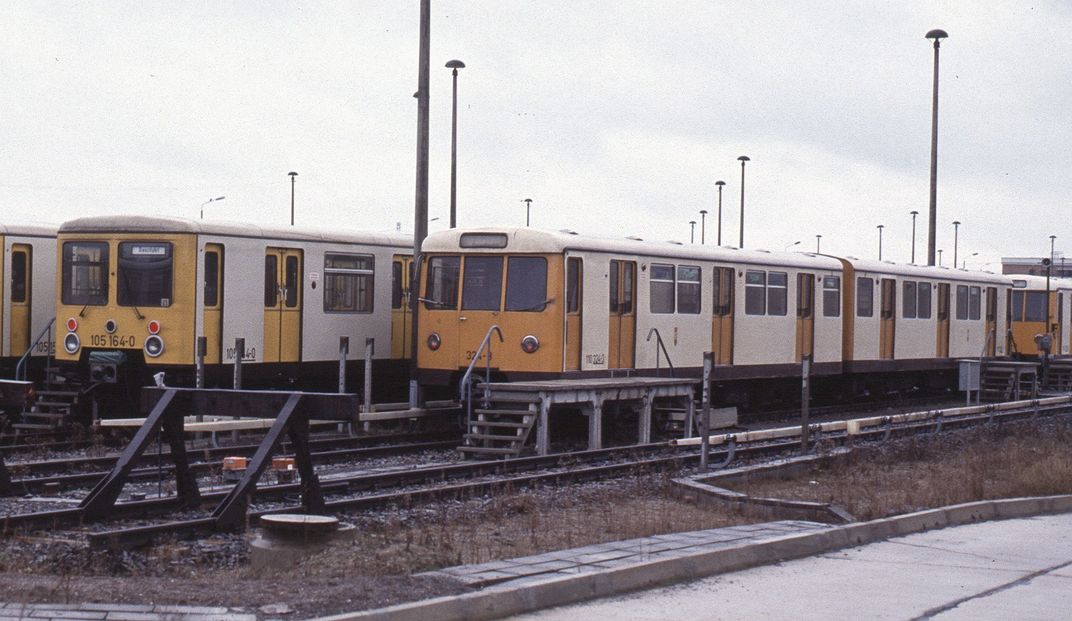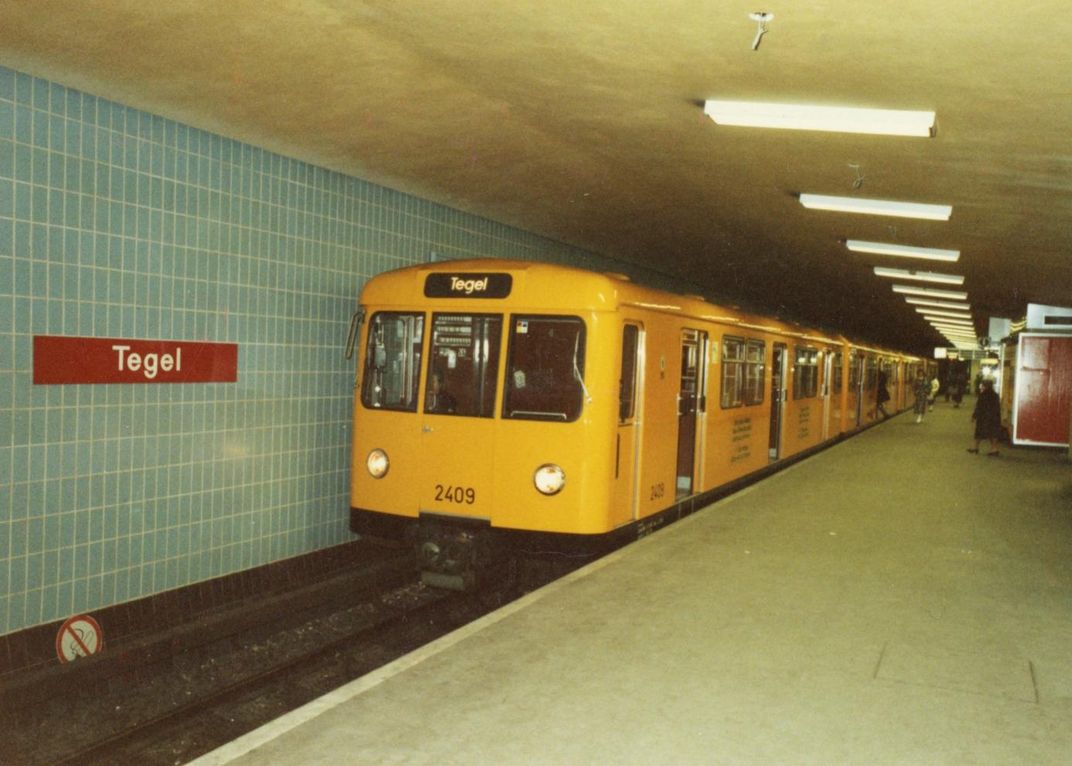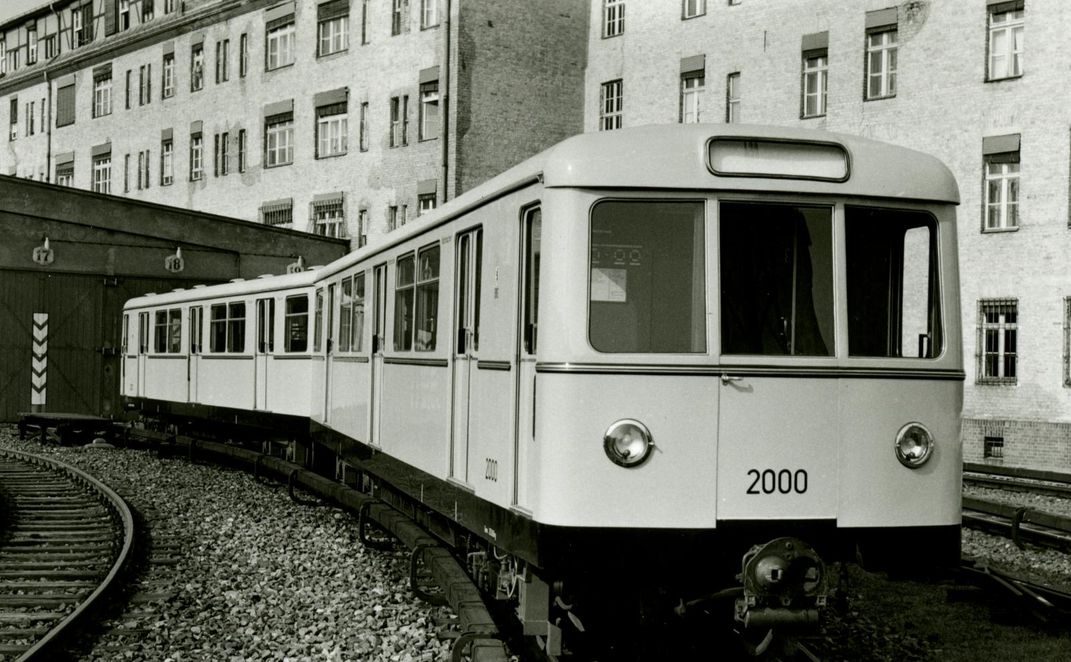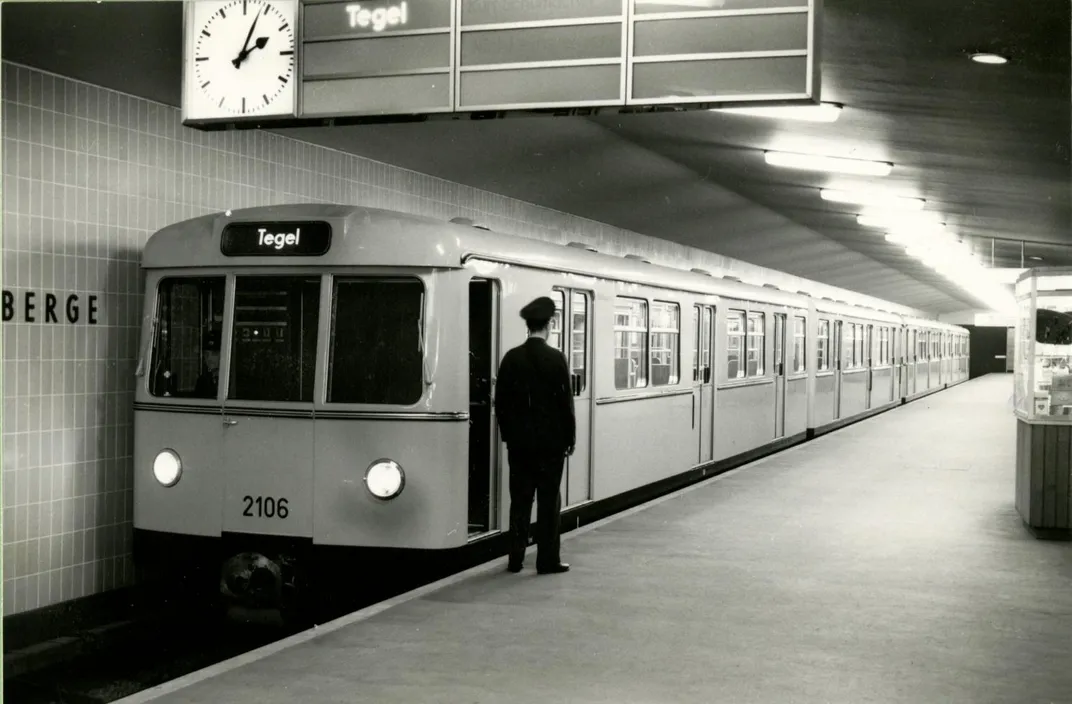See the Cold War-Era Trains Berlin Is Bringing Back Into Service
The “Dora” is returning to the tracks of the U-Bahn
For transportation nerds, there’s nothing quite like watching an antique subway rolling down the tracks. Seeing an old train from bygone days can bring back memories of a different time and give modern passengers a glimpse back at how people once got around their city. But for Berlin, the recent decision to bring several of its 1950s-era trains isn’t just nostalgic.
Introduced in the early days of the Cold War, the D- and DL-model trains once ruled Berlin’s U-Bahn subway system. Fondly referred to as “Doras,” these trains were textbook examples of 1950s design: yellow exteriors, plush green leather seating and milky-yellow lighting, The Local – Germany reports. For years, the Doras trundled back and forth across Berlin despite the growing tensions between the East and West. Then, in 1961, they came to a halt when the city was officially split in two. With the construction of the Berlin Wall and a heavy military presence looming over the city, the Doras were put into storage as they were no longer needed on their transit line. Since then, the Doras have mostly been museum pieces, leftovers from a bygone era.
But fond memories of subway systems past aren't the reason that Berlin’s U-Bahn is bringing the iconic trains back to the tracks. In recent years, the U-Bahn has been plagued by a serious shortage of rolling stock, Feargus O’Sullivan reports for CityLab. Instead of spending a huge amount of money to bring in entirely new trains, the city is instead opting to refurbish several Doras it still has for a (relatively) mere 1.9 million euros.
"In order to get [the Doras] approved again, they had to be technically overhauled from the ground up," Martin Süß, chief of subway trains for Berlin’s transit authority, the BVG (Berliner Verkehrsbetriebe), tells Thomas Fülling for the Berliner Morganpost.
That means retrofitting the trains with updated electrical systems, new lights, cameras and warning sounds to alert passengers to closing doors. The trains are also being updated to meet modern safety requirements, though they will still maintain their retro look, The Local reports.
The returning Doras are unlikely to solve too many of Berlin’s transit woes, though. Just three Doras will be retrofitted and put back into service in Berlin, O’Sullivan writes. A few years ago, the city sold off the majority of its old trains to North Korea, which still uses the aging cars on the Pyongyang subway system.
While three trains may not make a big difference when it comes to transit problems, there is some nice symbolism behind the decision, O’Sullivan reports. The transit line the Doras will run on—Line U55—was the first train line to be built after the city was reunified, and the first major piece of infrastructure that spanned east and west Berlin. Once again, the Doras will run across the city, just as they did in the days before the Wall.
